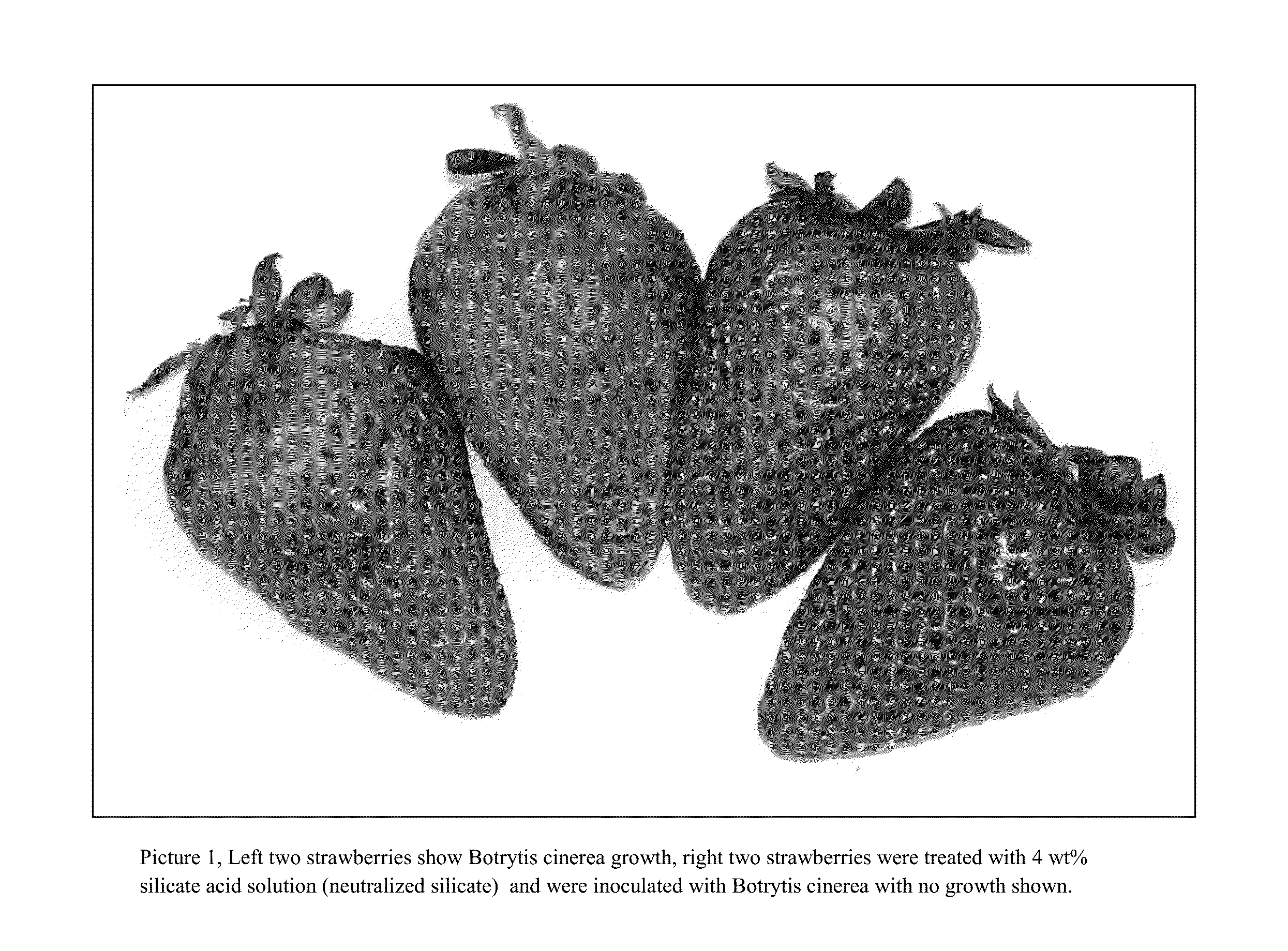Method for Treating Fresh Fruits and Fresh Vegetable Products
- Summary
- Abstract
- Description
- Claims
- Application Information
AI Technical Summary
Benefits of technology
Problems solved by technology
Method used
Image
Examples
example 1
[0034]Fresh cultures of Listeria spp. was isolated from spoiled meat and suspended in BHIM broth at about 5 log / ml, sodium metasilicate pentahydrate and lactic acid solution was added to the inoculated BHIM broth in a series of dilutions to give respective final concentrations in the broth of 0, 0.05, 1, and 2 wt % sodium metasilicate pentahydrate and equal parts of lactic acid solution. The cells were treated in the sodium metasilicate pentahydrate and lactic acid solution containing broth at room temperature for 5 min and then were removed from the system by centrifugation. The cells were then re-suspended and washed once in BHIM broth and plated on Oxford Medium, Modified plates (OMM). The plate count was performed after incubation at 30° C. for 48 hours. Results are given below in TABLE 1 as colony forming units per milliliter (CFU / ml) log reduction.
TABLE 1spp.Sodium5 logmetasilicatepentahydrate& Lactic acidCFU / mlSolutionlogconcentrationpHreduction0%7.61concentration0.05%7.22con...
example 2
[0037]E.COLI (ATCC 10798 K-12 strain) was prepared with LB broth at about 6 log / ml, per 1000 ml of broth. Two kilograms of romaine lettuce hearts were washed in sterile water and let dry in a cooled 1.6° C. sterilized cooler for 2 days. The romaine hearts were then removed and inoculated with the E.COLI broth of 500 ml per kilogram and left to grow in cool 3.3° C. cooler for 4 days. The romaine hearts were then removed and dunked into 18 liter chilled water bath of 3.3° C. for 30 seconds 400 grams of romaine hearts per series of solution. After dunking the romaine hearts were removed and spin dried to remove excess water. Solutions of sodium metasilicate pentahydrate and equal amounts of citric acid were prepared at 0 wt %, 0.5 wt %, wt %, 2 wt % and 4 wt %. After spin drying the romaine hearts were liquefied and plated on LB agar plates. The plate count was performed after incubation at 30° C. for 48 hours. Results are given below in TABLE 2 as colony forming units per milliliter (...
example 3
[0040]E.COLI (ATCC 10798 K-12 strain) was prepared with LB broth at about 5 log / ml. per 1000 ml of broth. Two kilograms of fresh strawberries university variety were washed in sterile water and let dry in a cooled 3.3° C. sterilized cooler for 2 days. The strawberries were then removed and inoculated with the E.COLI broth of 500 ml per kilogram and left to grow in cool 3.3° C. cooler for 4 days. The strawberries were then removed and sprayed with the silicate and acid aqueous solution for 15 seconds until runoff, 400 grams of strawberries per series of solution. After spraying the strawberries were removed and allowed to drip dry to remove excess solution. Solutions of sodium metasilicate pentahydrate and equal amounts of ascorbic acid were prepared at 0 wt %, 0.5 wt %, 1 wt %, 2 wt % and 4 wt %. After drying the strawberries were liquefied and plated on LB agar plates. The plate count was performed after incubation at 30° C. for 48 hours. Results are given below in TABLE 3 as colon...
PUM
 Login to View More
Login to View More Abstract
Description
Claims
Application Information
 Login to View More
Login to View More - R&D
- Intellectual Property
- Life Sciences
- Materials
- Tech Scout
- Unparalleled Data Quality
- Higher Quality Content
- 60% Fewer Hallucinations
Browse by: Latest US Patents, China's latest patents, Technical Efficacy Thesaurus, Application Domain, Technology Topic, Popular Technical Reports.
© 2025 PatSnap. All rights reserved.Legal|Privacy policy|Modern Slavery Act Transparency Statement|Sitemap|About US| Contact US: help@patsnap.com

